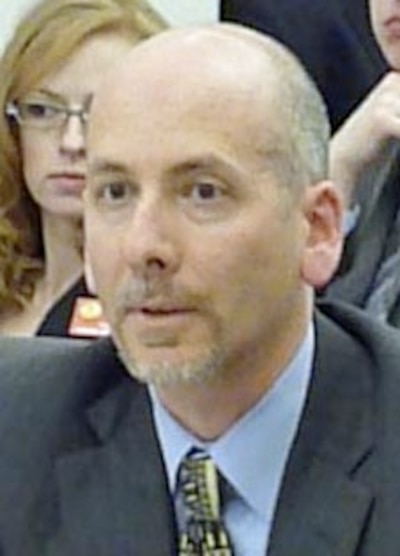Criticism of the state pension system was muted during the 2014 legislative session, but lawmakers quietly passed what potentially could be one of the more significant pension bills in four years.
The future of the Public Employees’ Retirement Association (PERA) is of vital interest to the state’s teachers and school administrators, all of whom are covered by the system and who make up about 65 percent of PERA’s nearly 200,000 members.
It’s also of concern to school districts, which are paying an ever-increasing percentage of their payrolls to PERA.
Senate Bill 14-214 doesn’t make any changes in PERA – it just launches three pension studies. But the results of those reviews could set the stage for legislative decisions starting in 2016.
Public employee pensions have been the focus of growing concern in recent years, especially since the 2008 recession decimated the value of pension fund portfolios. PERA’s liabilities, for instance, are only about 65 percent funded. (Get national background in this brief from the Pew Center on the Pew Charitable Trusts.)
A 2010 law that passed with bipartisan support made important changes to PERA, including less generous age and service requirements for employees hired after the law was passed. The law also allowed reduction of cost of living increases for current retirees, a provision that drew a lawsuit. That case is pending before the Colorado Supreme Court (see story).
The 2010 law didn’t ease concerns about PERA on the part of some Republican lawmakers, who in recent sessions repeatedly proposed bills to change the PERA retirement age, tweak calculation of benefits, convert PERA to a defined contribution system, change the membership of the PERA board and target highly paid retirees (like former governors). None of those measures passed, and only two such bills were introduced this session.
What the 2014 bill would do
SB 14-214 will set in motion three PERA studies, the latter two of which are of particular interest to K-12 employees. The studies would:
- Provide a more detailed look at the total compensation of state employees, including pension costs
- Evaluate the costs and effects of switching PERA to a defined contribution system from the current defined benefit system
- Determine methods for tracking the financial health of PERA at intervals over the next 30 years
Supporters of the bill hope the results of the studies, particularly the second and third ones, will provide information that will calm the ideological and somewhat circular arguments over PERA.
“Having the data to shut down those debates could be useful,” said Sen. Pat Steadman, D-Denver and vice-chair of the Joint Budget Committee. That panel’s six members sponsored SB 14-214.
Steadman said the third part of the study “is going to be the piece that’s the most interesting and that makes a potentially interesting 2016 session.”
The 2010 PERA reform law (Senate Bill 10-001) was designed to make the system fully funded in 30 years, based on a variety of assumptions about investment rate of return, contributions, retirement payouts and many other factors. But the problem has been there’s no way to gauge how the law is working along the way, leading to unproductive “sky is falling” vs. “stay the course” arguments that aren’t based on data.

State budget director Henry Sobanet notes that there have been “all kinds of pension questions” ever since the 2010 law that can’t really be answered.
“Take for example this idea of the rate of return,” referring to the predicted return on system investments.
The PERA board has been assuming an average 8 percent return over 30 years, a figure that some, including Republican state Treasurer Walker Stapleton, have criticized as unrealistic by some. The board recently lowered the assumption to 7.5 percent.
The problem, Sobanet notes, is “you really don’t know until 30 years from now” if the rate of return assumption was correct.
“Isn’t it more important to think about what we could do along the way to know if we’re off” in the effort to make the system solvent, he said.
The idea behind the third study is to come up with methods for assessing what’s happening at shorter intervals. “I think what this will do is give us a more explainable insight into whether the [2010] model is working,” Sobanet said. “I think we can do more to show people why we think it’s on track.”
Referring to all three studies, Sobanet added, “I just don’t think it’s productive to have these discussions theoretically. We should have some numbers associated with this.”
PERA a touchy issue
Suggestions for changing the pension system can raise anxieties quickly, as shown by the pending lawsuit and by the passionate testimony from retirees almost every time a PERA bill is heard in a legislative committee.
Given that, Sobanet is careful in discussing the studies, noting that his boss, Gov. John Hickenlooper, “supports PERA, and he also supports defending Senate Bill 1.”
Sobanet continued, “This is a data investigation. We’re not proposing changes to PERA.”
PERA background
The school division is the largest of PERA’s six divisions, with more than 115,000 members. The separate DPS division has about 14,000 members. (The DPS pension system was merged into PERA a few years ago, but the assets and benefits are kept separate.)
The pension system has about $43 billion in net assets, and its liabilities were 63.2 percent funded at the end of 2012. The 2013 PERA financial report is expected to be released in late June. (See 2012 report here.)
School districts contribute a base 10.15 percent of payroll to PERA, plus an additional 6.4 percent in supplemental payments, some of which is money that otherwise would have gone to employees as salary. Employees contribute 8 percent of pay. DPS, which is a separate division, has a variable contribution schedule that can be as high as 20.15 percent.
Those supplemental payments, known by the acronyms SAED and AED, are scheduled to rise to a total of 11 percent by 2018.


